This post may contain affiliate links. Please read our disclosure policy.
The Best Lasagna Recipe is here, ready to impress! With layers of slow-cooked Ragù Bolognese and creamy parmesan Besciamella, this dish stays true to its authentic Italian roots. One bite, and you’ll see why it’s destined to become your new weekend favorite. For the ultimate comfort food experience, serve it with a bowl of Sausage Gnocchi Soup since the creamy broth and savory sausage perfectly complement the rich layers of lasagna. Lasagna holds a special place among the world’s most beloved comfort foods, and this Best Lasagna is no exception.
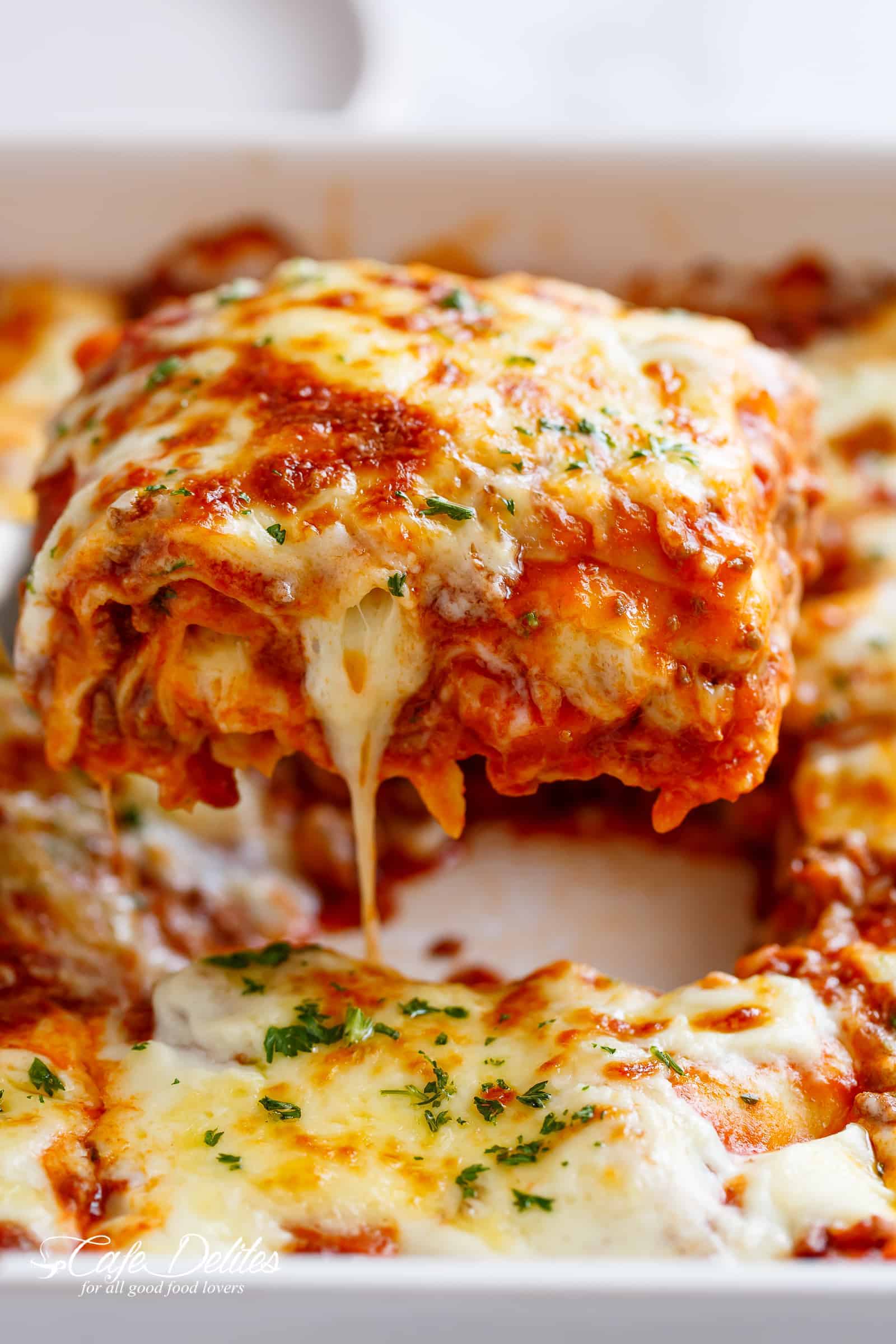
Ultimate Guide To The Best Lasagna
When it comes to the Best Lasagna, this recipe holds a special place in my heart—and for good reason. Inspired by my mom’s unbeatable best lasagna, perfected over years with tips from her Italian friends in New York City, it delivers authentic flavors that will keep you coming back for seconds (and thirds).
What truly sets this lasagna apart is the sauce. Slow-cooked Ragù Bolognese, packed with rich flavors, brings it all together—a secret shared with our Spaghetti Bolognese. Layered with creamy parmesan Besciamella, tender pasta, and melted cheese, this lasagna is not just a dish—it’s a heartfelt labor of love that promises joy in every bite.
The Best Lasagna: Key Ingredients
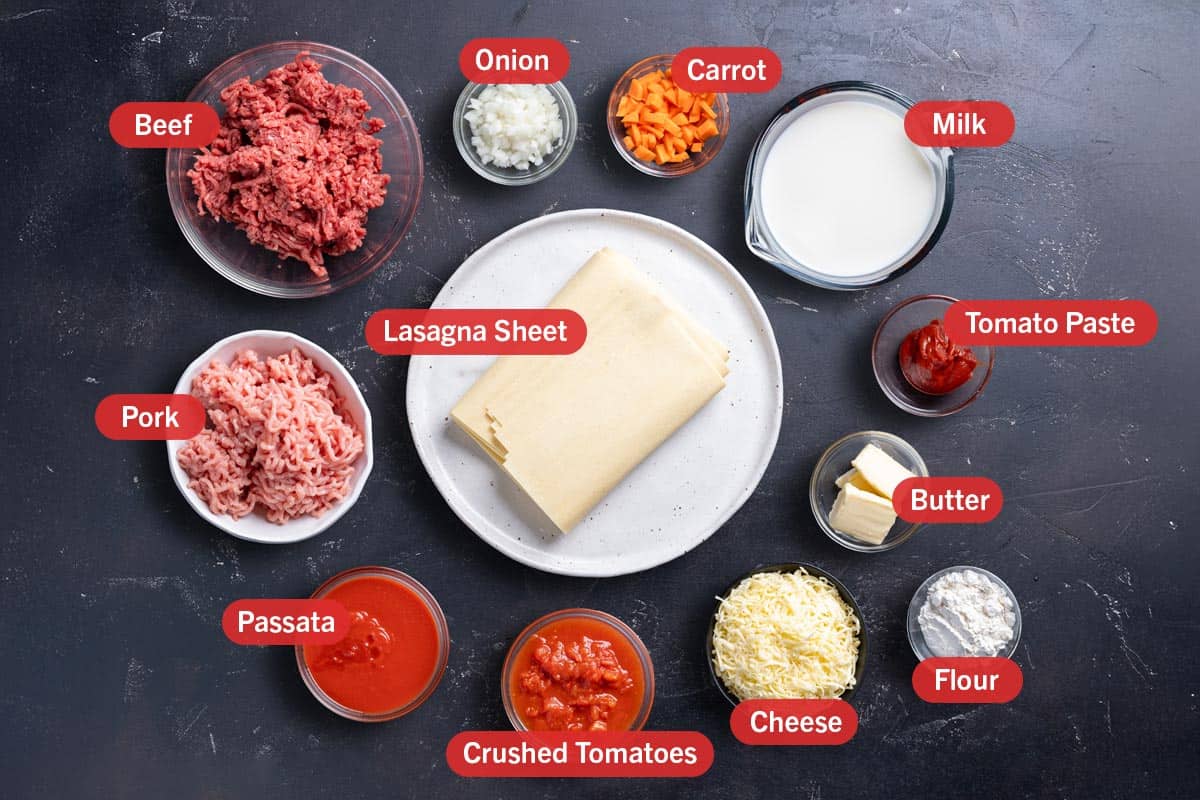
The secret to the Best Lasagna lies in the ingredients. Slow-cooked Ragù Bolognese delivers deep, rich flavor, parmesan Besciamella adds creamy indulgence, and layers of tender pasta hold it all together. Simple staples, incredible results every time!
- Ground Meat (Beef and Pork): Using a mix of ground beef and pork adds depth and richness to the best lasagna. Beef provides robust flavor, while pork adds sweetness and juiciness, creating a balanced and flavorful meat sauce. If you don’t eat pork, you can just use beef. For best results, use high-quality, grass-fed beef and free-range pork for tender, flavorful meat. This combination is the foundation of any ragù, similar to my Slow Cooker Bolognese Sauce.
- Mozzarella: For gooey, melty cheesy goodness, use high-quality mozzarella, either shredded or sliced. Fresh mozzarella is a must. Consider buffalo mozzarella for its beautiful melt and creamy texture. Whole-milk mozzarella is richer and more flavorful than part-skim varieties.
- Tomatoes (for Passata): Choose ripe, vine-ripened tomatoes or high-quality canned tomatoes with no preservatives for your passata. They provide natural sweetness and acidity, balancing the meat and cheese’s richness. Opt for San Marzano tomatoes for superior taste and texture.
*Note: Please see Recipe Card at the bottom for a full list of ingredients and measurements.
Additions And Substitutions
When it comes to crafting the Best Lasagna Ever, versatility is key. Whether you’re looking to elevate the flavors or adapt to what’s in your pantry, small tweaks can make a big difference. These substitutions and additions ensure every layer is tailored to your taste and truly unforgettable!
- Vegan and Lactose Intolerant Options: For those who are lactose intolerant or vegan, you can substitute traditional butter with vegan butter, which offers a similar creamy texture and flavor. Additionally, use lactose-free cheese or vegan cheese alternatives to maintain the cheesy goodness without compromising on taste.
How to Make The Best Lasagna: Step-By-Step
Making Mama’s Best Lasagna is easier than you think, with rich layers of slow-cooked Ragù Bolognese, creamy parmesan Besciamella, and perfectly cooked pasta. Follow these simple steps to create a comforting dish that’s as rewarding to make as it is to eat. Let’s dive into the layering!

- Sauté Vegetables: Heat oil in a large pot over medium heat, add onion and carrots, and cook until softened. Add garlic and sauté until fragrant. Add beef and pork, cooking until browned.
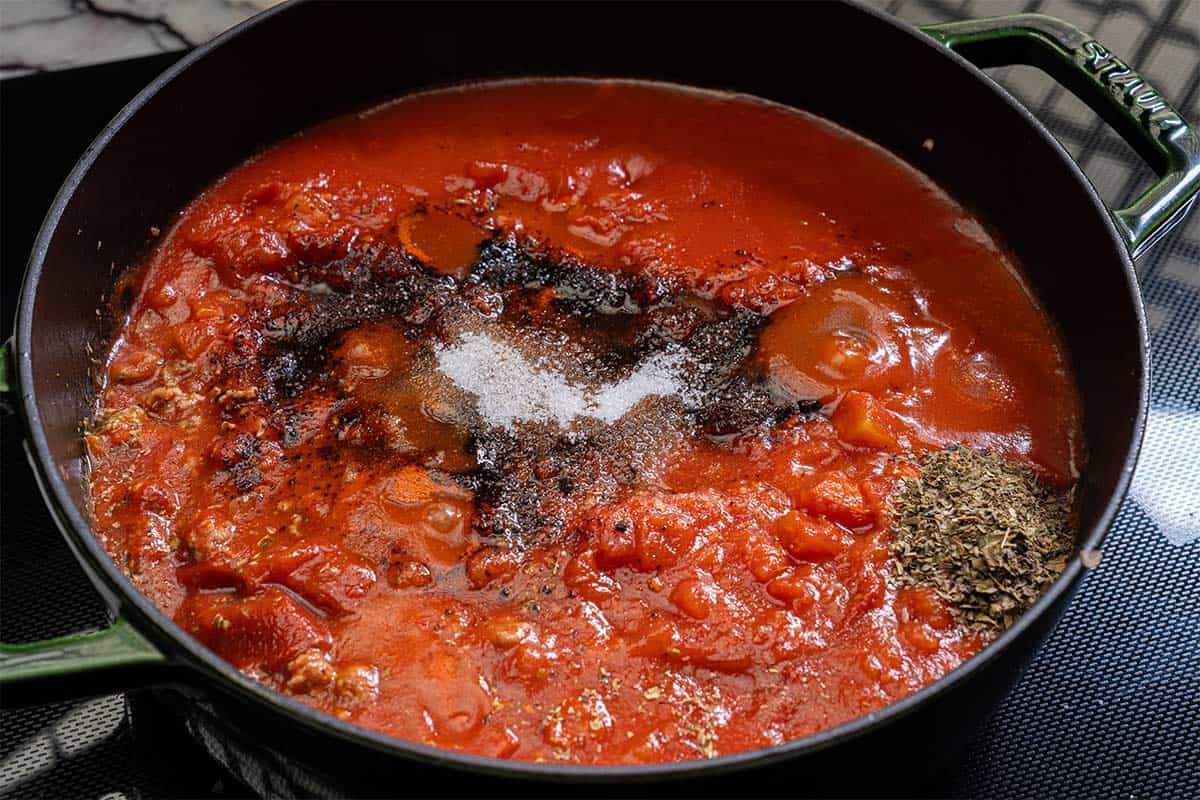
- Simmer Sauce: Pour in Passata, crushed tomatoes, tomato paste, crushed bouillon, and dried herbs. Mix well, season with salt, pepper, and sugar if needed. Cover and cook, occasionally mixing, until the sauce thickens and the meat is tender.
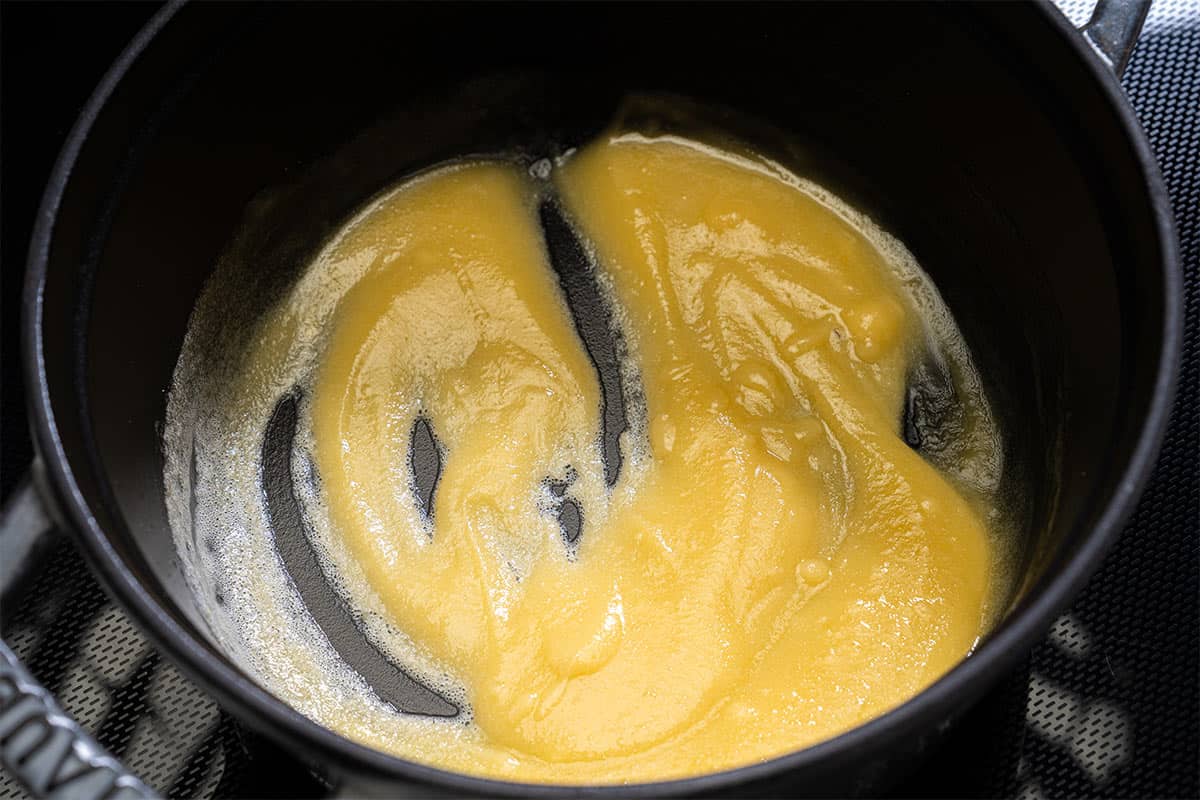
- Melt Butter and Add Flour: In a large pot, melt butter over medium heat. Remove from the hot plate; add flour and whisk for about 30 seconds, or until well blended.
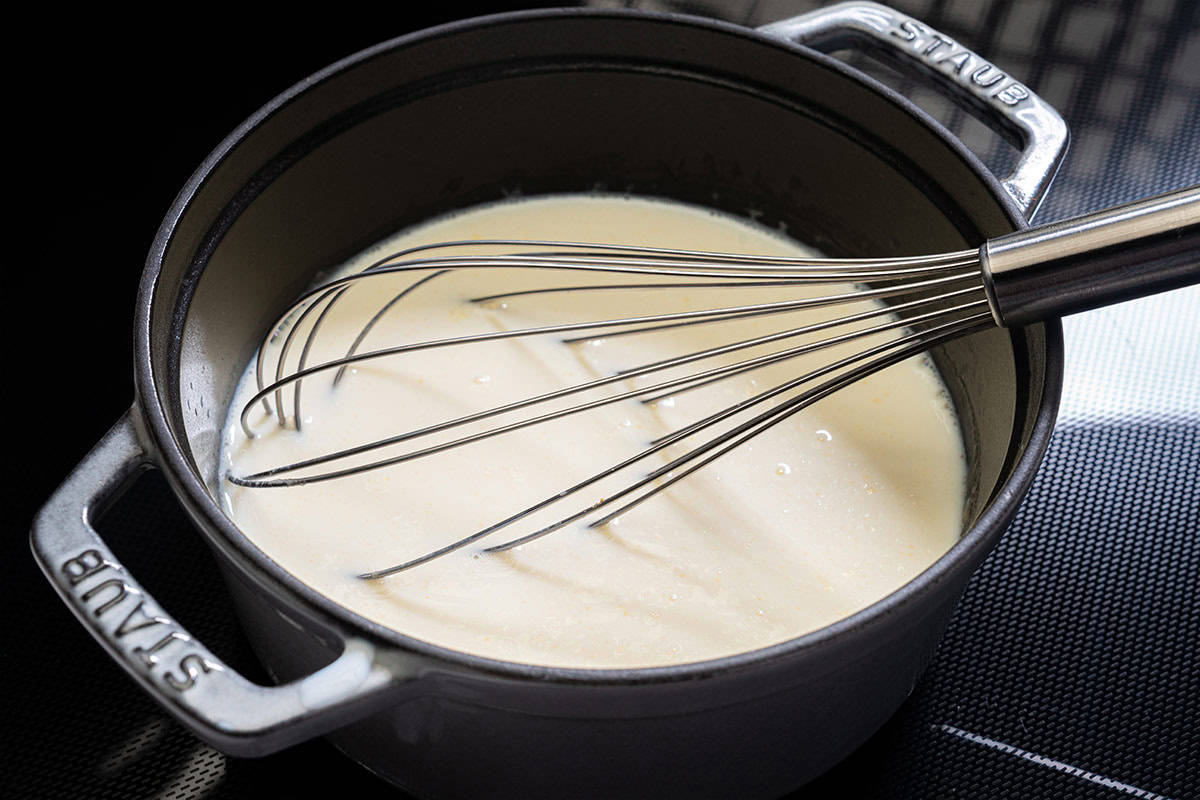
- Whisk in Milk: Return the pot to the stove, reduce heat to low, and slowly whisk in milk until well combined, adding milk in increments until the sauce is creamy and free from lumps.

- Thicken Sauce and Add Cheese: Increase heat to medium and continue cooking the sauce while stirring occasionally until it thickens and coats the back of your wooden spoon. Add parmesan cheese, season with salt and pepper, and mix until the cheese melts through. Remove from heat.
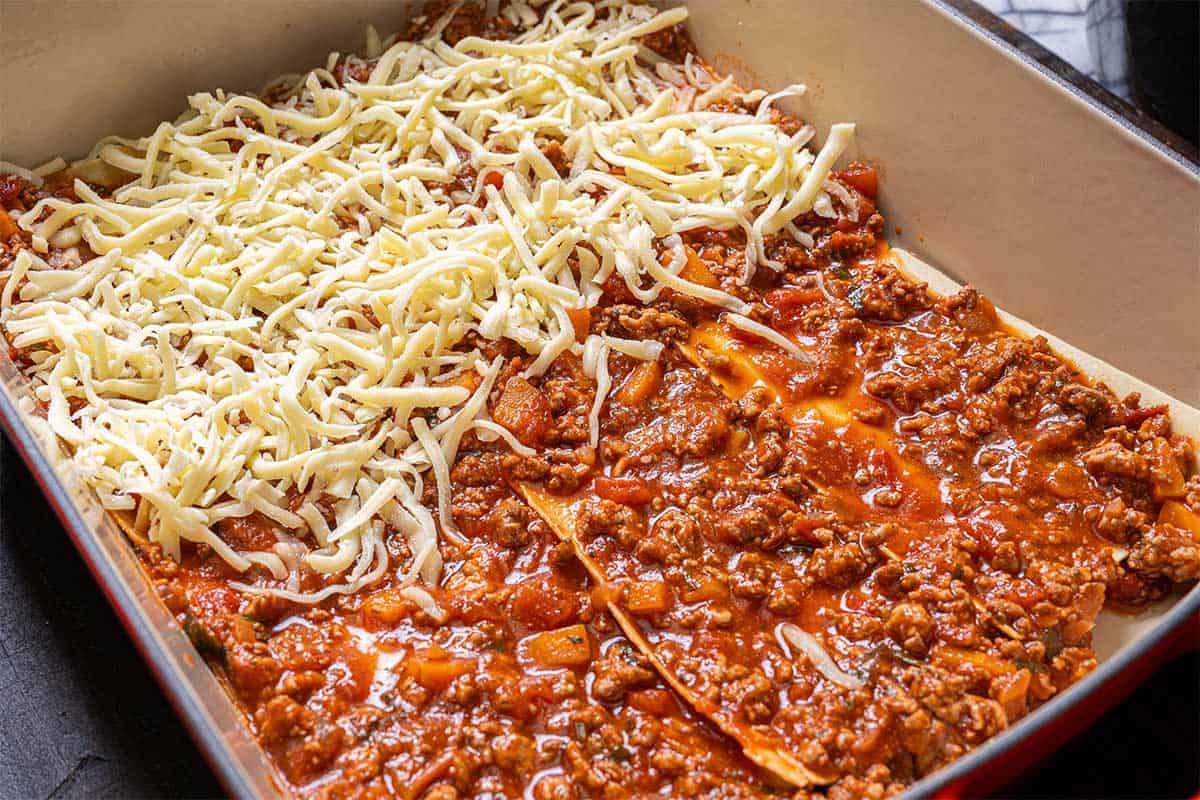
- Assemble Lasagna: Preheat oven to 350°F | 180°C. Spoon meat sauce on the base of a baking dish, then cover with lasagna sheets (trim if needed). Layer with meat sauce, white sauce, and half of the mozzarella cheese. Repeat layers, leaving the remaining cheese for the top.
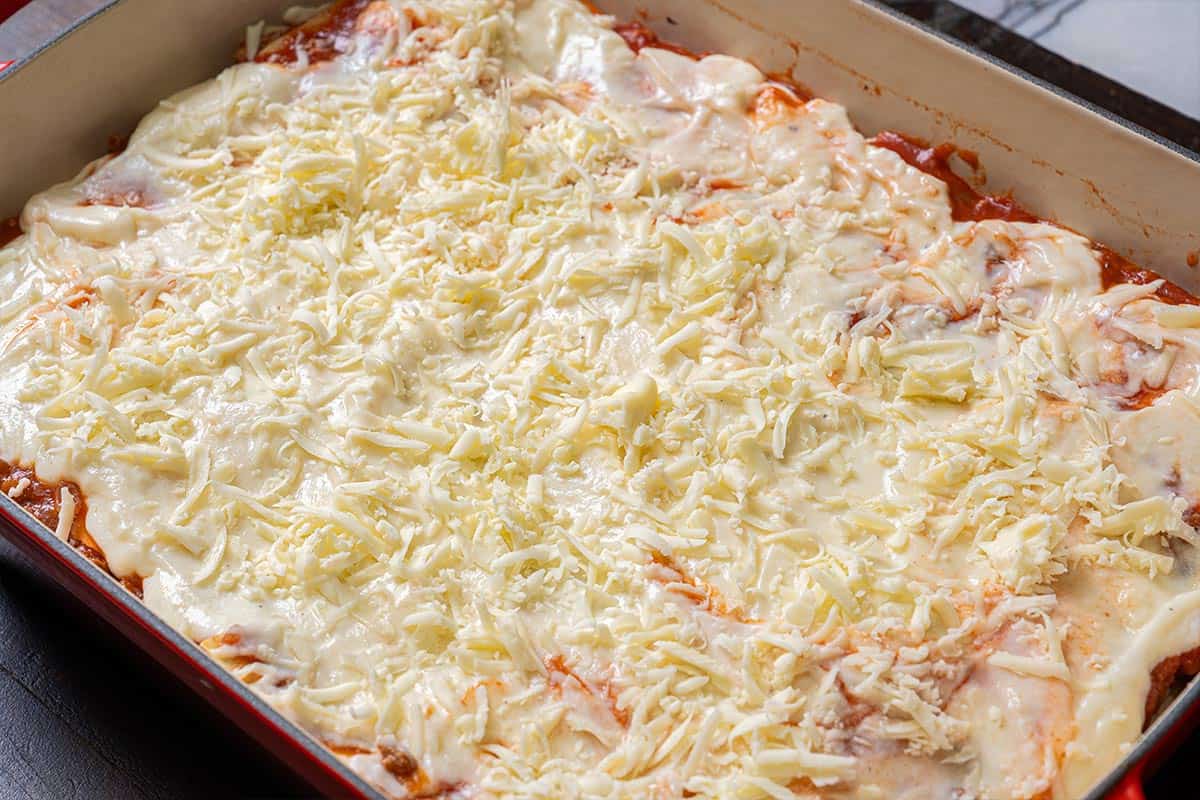
- Top and Bake: Pour the remaining meat sauce and white sauce over the last layer of lasagna sheets and top with the remaining mozzarella cheese. Bake for 25 minutes or until golden and bubbling.
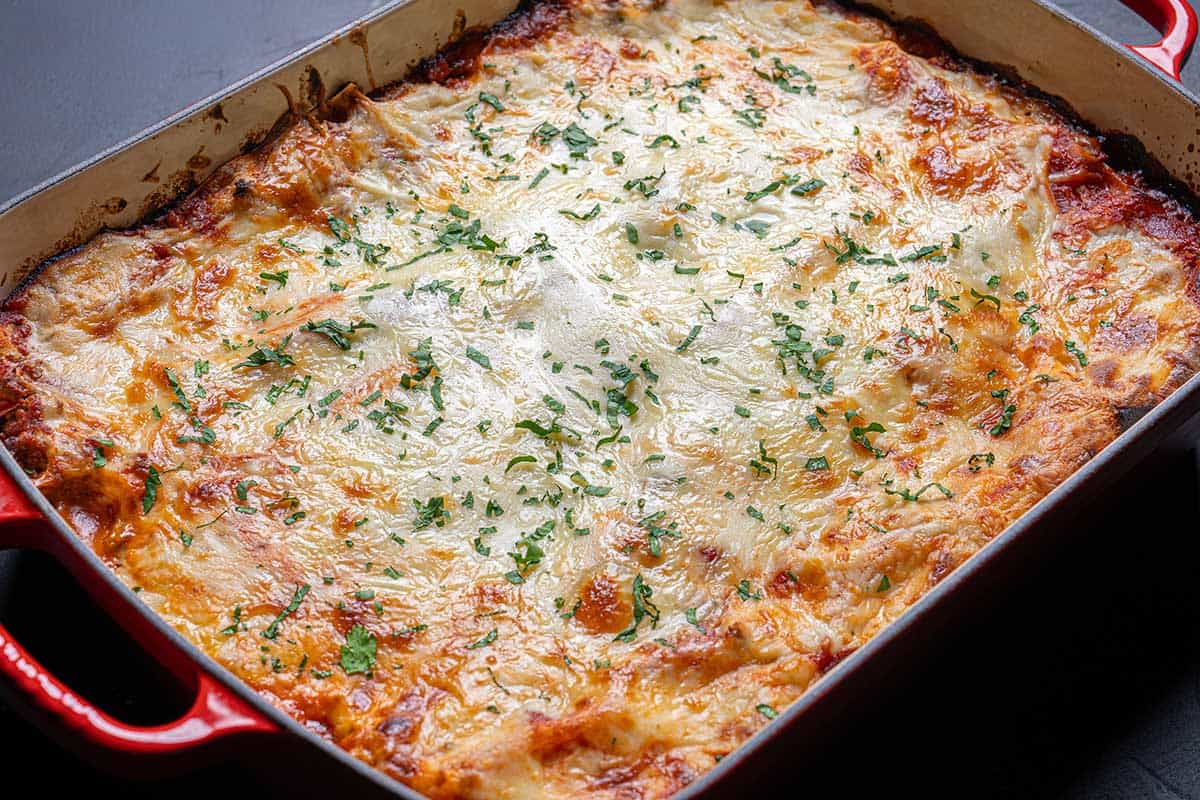
- Garnish and Serve: Garnish with parsley and let stand for about 10 minutes before slicing and serving.
Once you’ve nailed Mama’s Best Lasagna, it’s time to shake things up and get creative. If you thought I’d leave you to dream up variations all on your own—think again!
While I definitely encourage you to experiment, here are a few twists to inspire your culinary creativity: try a hearty Beef and Pumpkin Lasagna or a delightful Chicken Pumpkin and Ricotta Lasagna. Feeling adventurous? Dive into an Easy Slow Cooker Lasagna Soup, Spaghetti Squash Lasagna Boats, or even Easy Lasagna Stuffed Burritos.
Recipe FAQ’s
Once you’ve layered your lasagna, make sure your final layers finish in this order: pasta, meat sauce, white sauce, and mozzarella cheese. This sequence results in a golden, crunchy, and cheesy top with a layer of juicy meat sauce underneath
We prefer fresh lasagna pasta sheets, which you can find in the refrigerator section of most grocery stores. But if you can’t get your hands on fresh sheets, no worries—dried ones work just as well!
You can store lasagna in the refrigerator for up to 3-5 days. Make sure to cover it tightly with plastic wrap or aluminum foil, or store it in an airtight container to maintain freshness. If you need to store it for a longer period, you can freeze lasagna for up to 3 months. To reheat, thaw it in the refrigerator overnight and then bake it in the oven until it’s heated throug


Mama’s Best Lasagna
Ingredients
Meat Sauce:
- 1 tablespoon olive oil
- 1 onion finely chopped
- 1 carrot finely diced
- 4 cloves garlic cloves minced
- 24 ounces ground beef mince
- 10 ounces ground pork mince or beef
- 24 ounces Passata
- 14 ounces crushed tomatoes
- 3 tomato paste heaped tablespoons. I use garlic and herb flavoured.
- 2 beef bouillon cubes or vegetable, crushed
- 1 teaspoon dried oregano
- 1 teaspoon dried basil
- 1/2 teaspoon sugar if desired
- 1/4 teaspoon salt season to your tastes
- 1/4 teaspoon black pepper season to your tastes
White Sauce (Béchamel):
- 4 tablespoons butter
- 1/4 cup flour all purpose or plain
- 2 1/2 cups milk
- 1 cup shredded parmesan fresh
Lasagna:
- 13 ounces fresh lasagna sheets
- 17 ounces fresh mozzarella cheese shredded
- 2 tablespoons fresh parsley finely chopped
Instructions
Meat Sauce:
- Heat oil in a large pot over medium heat, then add in the onion and carrots and cook for 8-10 minutes, or until softened. Add in the garlic and sauté for about 1 minute, until fragrant.
- Add beef and pork (if using) and cook while breaking it up with the end of your spoon, until browned.
- Pour in the Passata, crushed tomatoes, tomato paste, crushed bouillon and dried herbs. Mix well to combine and bring to a gentle simmer. Season with desired amount of salt and pepper (I use about 3/4 teaspoon each) and sugar if needed. Cover and cook for about 20-30 minutes, occasionally mixing, until the sauce has thickened slightly and meat is tender.
- Adjust salt, pepper and dried herbs to your taste.
Parmesan White Sauce:
- In a large pot, melt butter over medium heat. Remove from hot plate; add the flour and whisk for about 30 seconds, or until well blended.
- Place pot back onto stove, reduce heat down to low and slowly whisk in 1 cup of the milk until well combined. Once well blended, add the remaining milk in 1 cup increments, mixing well after each addition, until all the milk is used and sauce is free from lumps. If the sauce is too thick, add a little more milk until it turns into a nice and creamy consistency.
- Increase heat to medium and continue cooking sauce while stirring occasionally until it thickens (about 6-7 minutes) and coats the back of your wooden spoon.
- Add in the parmesan cheese and remove from heat. Season with salt and pepper and mix until the cheese is melted through.
To Assemble:
- Preheat oven to 350°F | 180°C.
- Spoon about 1 cup of meat sauce on the base of a 9×13-inch baking dish, then cover with lasagna sheets. (Trim sheets to fit over the meat if needed.) Layer with 2 cups of meat sauce (or enough to cover pasta), 1 cup of white sauce and half of the mozzarella cheese. Repeat layers (leaving the remaining cheese for the top).
- Pour the remaining meat sauce and white sauce over the last layer of lasagna sheets and top with the remaining mozzarella cheese. Bake for 25 minutes or until golden and bubbling.
- Garnish with parsley and let stand for about 10 minutes before slicing and serving.ENJOY!
Notes
Nutrition
Nutrition information is automatically calculated, so should only be used as an approximation.
You might also like
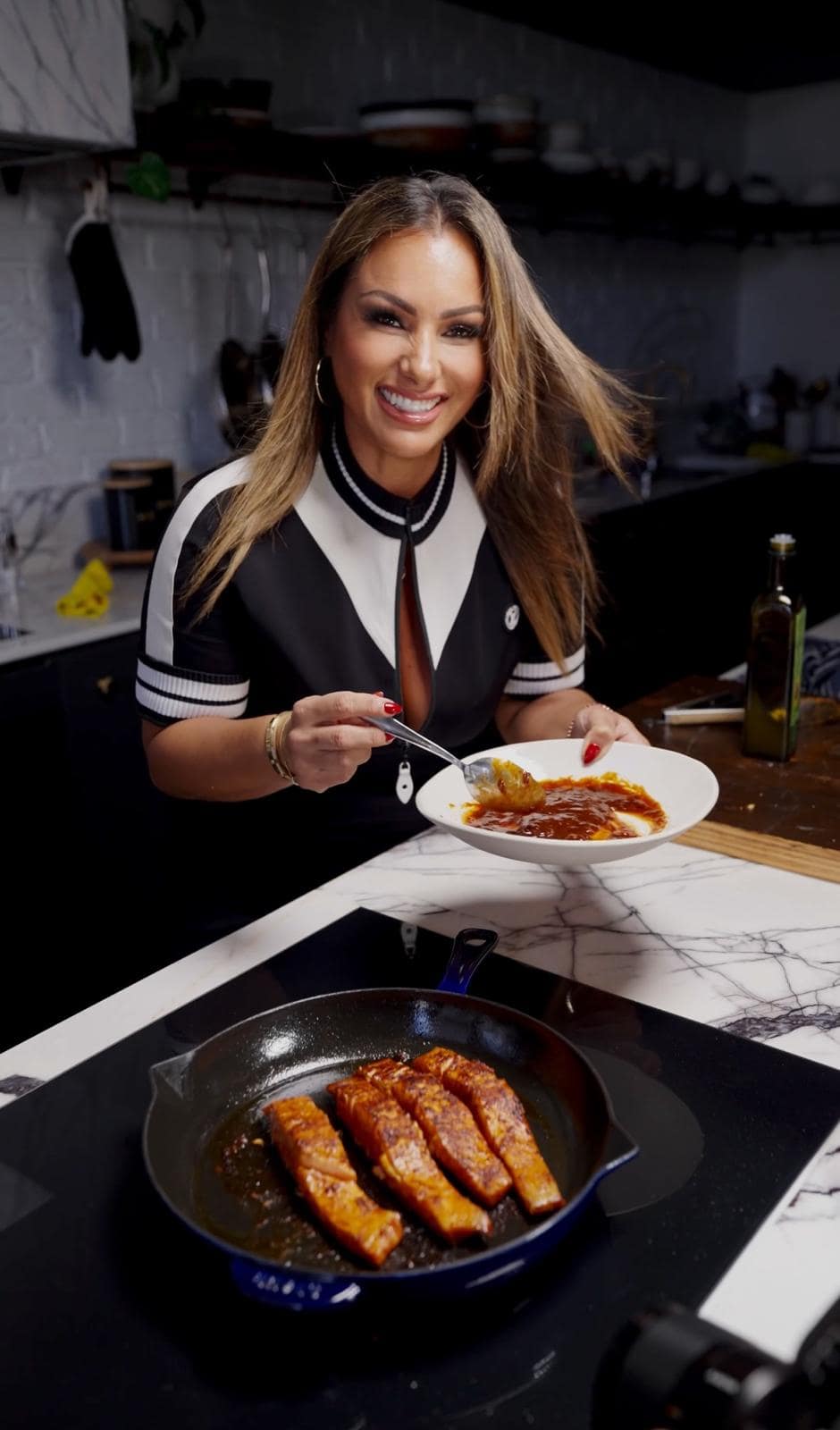
Get a free eBook!
Subscribe to Cafe Delites FOR FREE and receive recipes straight into your inbox!
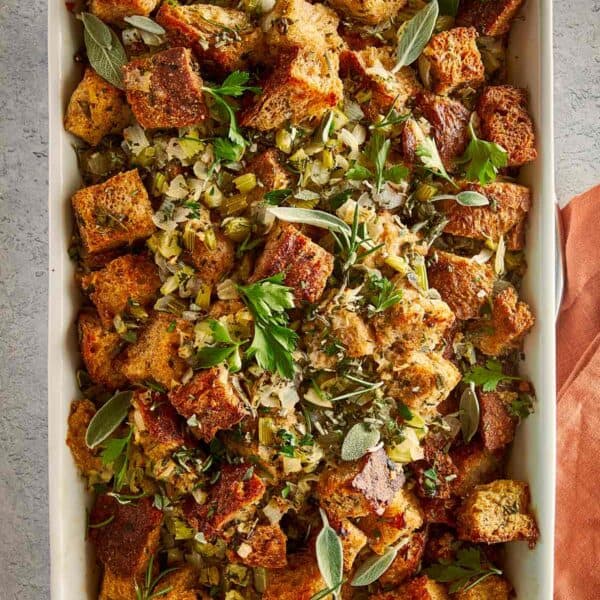


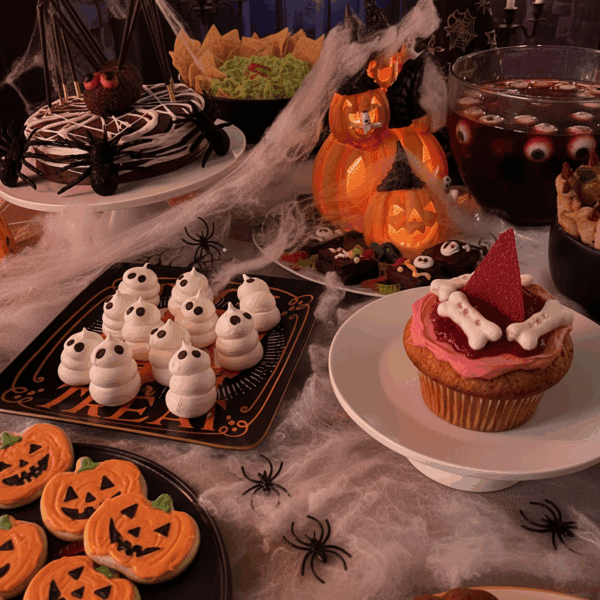










THE best lasagna recipe ever. L
This was amazing – my family was in love this Lasagne! Are the nutrition information per serving/person?
Hi Victoria,
So good to hear your family loves this. To answer your question, the nutritional information is per serving, which in this case is per slice of lasagna if it was cut into 12 equal pieces. Hope this helps and enjoy your cooking!
I made this for dinner last night, it turned out perfectly with no adjustments. I have a family of very picky eaters (especially my preschooler), and everyone asked for seconds and thirds!
Hi. Been meaning to comment for some time now but just now got to it. Anyway I’m not one to ever comment on anything but had to let u know how much I love this recipe. I thank u and ur amazing mama for this recipe. I follow it exactly as written. I cook the white sauce usually more like 20 min or so before it thickens but aside from that it turns out perfect every time. I dont like ricotta cheese and this recipe was perfect for me. Oh I forgot i do add a layer of pepperoni on top of the meat sauce lol. But if u read this please try it. Thanks so much.
Can you assemble the lasagna, leave it in the fridge and bake the next day?
Hi Cathy,
Yes, you can assemble the lasagna, leave it in the fridge, and bake it the next day. Just ensure you cover the dish tightly with plastic wrap or aluminum foil to prevent drying out. When you’re ready to bake, you may need to add a few extra minutes to the cooking time if the lasagna is coming straight from the fridge, as it will be colder than if it were baked immediately after assembly. Enjoy your lasagna!
Excellent recipe. Used two pounds of ground beef, one pound of ground pork. Makes large portion. Baked for 50-55 minutes uncovered and then rested for 15. It’s a keeper!
Hi this recipe looks amazing, however, if I can’t find lasagna sheets in the store and have to use dried, how many layers do I make?
Hi Melissa,
When using dried lasagna sheets instead of fresh ones, the number of layers you can make may vary based on the size and thickness of the dried sheets. However, you can typically maintain the same assembly method described in the recipe.
Here’s a general guideline:
Layer Count: You can usually make 3 to 4 layers of pasta in a standard 9×13-inch baking dish. Adjust based on the thickness of your sheets:
If the sheets are particularly thick, you might want to reduce the number of layers.
If using no-cook or instant noodles, follow the instructions on the package, as some brands may absorb more moisture than others.
Liquid Addition: When using dried lasagna sheets, it’s essential to ensure there is enough sauce for the pasta to absorb moisture while baking. As you noted in the recipe instructions, consider adding about ½ cup of water to your meat sauce to help the pasta cook properly.
Assembly: Follow the same layering pattern: start with meat sauce, then pasta, followed by white sauce and cheese, repeating this until the last layer which should finish with meat sauce, white sauce, and mozzarella.
By keeping these adjustments in mind, you can still achieve a delicious lasagna using dried sheets! Enjoy your cooking!
The béchamel was extremely soupy, I also see that a lot of other recipes call for 2.5c milk. Is this suppose to be this loose or is the milk ratio maybe incorrect in the recipe? I wish there was a video on how you prepare it so I could understand if this was how it was suppose to look, hopefully you will be able to reply. Thanks so much!
Hi Brea,
It sounds like the béchamel sauce didn’t thicken as expected, and you’re correct that many recipes often use around 2.5 cups of milk for a standard béchamel sauce for lasagna. The consistency of a properly made béchamel should be creamy and able to coat the back of a spoon, rather than soupy. I use 3.5c of milk to contribute to a more luxurious and creamy texture, which is desirable in many lasagna recipes, adding richness and helping to balance the flavors of the meat and cheese.
Here are some possible reasons for the soupy consistency:
Cooking Time: The sauce needs to be cooked long enough after adding all the milk to allow it to thicken. Make sure to stir continuously and let it simmer until it reaches the desired consistency.
Heat Level: If the heat is too low, the béchamel may not thicken properly. It’s important to cook it over medium heat and stir regularly.
Adding Flour: Ensure that the flour is well incorporated when you first add it to the melted butter. It should be a smooth paste (roux) before you slowly whisk in the milk. With enough cooking time and stirring, the béchamel can thicken nicely even with a larger volume of milk.
Suggested Adjustments:
Make sure to cook the béchamel on medium heat and stir continuously until it thickens.
Thank you for reaching out, and I hope you find these tips helpful for your next attempt at making the béchamel!
I would like to prepare this recipe, but I would like to know how many layers this is. Thank you. I’ll be using boiled lasagna noodles
Hi Lisa,
When using boiled lasagna noodles in your recipe, you can typically create about 3 to 4 layers in a standard 9×13-inch baking dish. Here’s a suggested layering guide:
First Layer: Start with a spoonful of meat sauce at the bottom to prevent sticking, then place a layer of boiled lasagna noodles.
Second Layer: Add 2 cups of meat sauce, followed by 1 cup of white sauce (béchamel) and half of the mozzarella cheese.
Third Layer: Repeat with another layer of noodles, 2 cups of meat sauce, 1 cup of white sauce, and the remaining mozzarella.
Fourth Layer (if you have enough noodles): Continue with a final layer of meat sauce and white sauce, finishing with any remaining mozzarella cheese on top.
If you find you have extra noodles or sauce, feel free to add an additional layer or adjust accordingly. Just keep in mind that the noodles need enough sauce to ensure they cook properly and absorb moisture while baking.
Enjoy preparing your lasagna!
How many layers of lasagna noodles?
Hi Lisa,
For a lasagna made with boiled noodles in a standard 9×13-inch baking dish, you can typically use 3 to 4 layers of lasagna noodles. Here’s a breakdown:
If you have 9 noodles: You can do 3 layers, using 3 noodles for each layer.
If you have more noodles (like 12): You can potentially create 4 layers, using 3 noodles for each layer at first and adjusting with any extra noodles you have for additional layering.
Just make sure to adjust your sauce quantities accordingly to ensure all layers are adequately moistened. Enjoy your cooking!